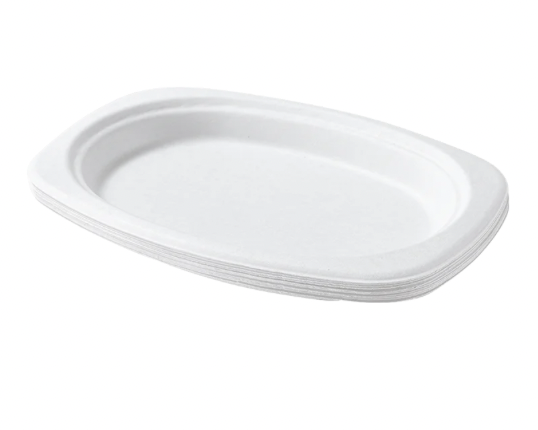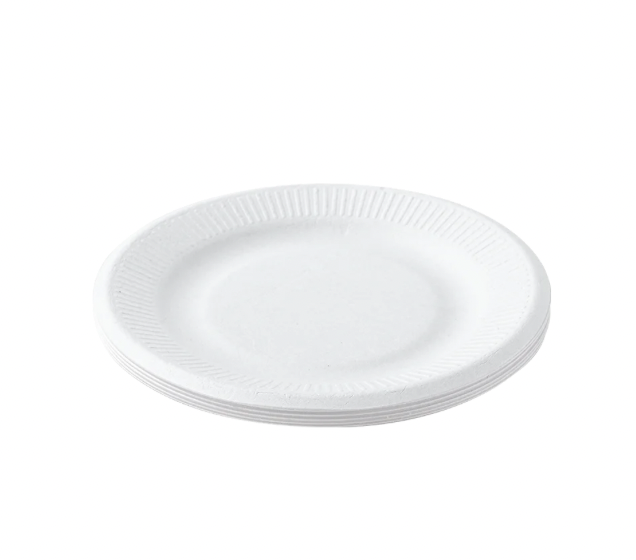Sustainable Dining Solutions for Environmental Consciousness
The growing awareness of environmental impact has sparked a revolution in everyday products, including eco-friendly paper plates. These sustainable alternatives to traditional disposable dinnerware are transforming how we approach casual dining and events while maintaining our commitment to planetary health. As consumers increasingly seek ways to reduce their environmental footprint, eco-friendly paper plates have emerged as an innovative solution that combines convenience with consciousness.
The market for sustainable disposables has expanded significantly, offering various options that cater to different needs while prioritizing environmental responsibility. From plates made from fallen palm leaves to those crafted from recycled materials, the evolution of eco-friendly dining solutions demonstrates the industry's response to urgent environmental concerns.

Understanding Eco-Friendly Paper Plate Materials
Bamboo-Based Solutions
Bamboo has revolutionized the sustainable dinnerware industry with its remarkable properties. As one of the fastest-growing plants on Earth, bamboo provides an incredibly sustainable source material for eco-friendly paper plates. These plates offer exceptional durability and naturally resist water better than traditional paper options. The manufacturing process requires minimal chemical treatment, making bamboo plates an environmentally conscious choice.
The production of bamboo-based plates also contributes to reduced carbon emissions, as bamboo forests naturally sequester carbon dioxide more efficiently than many other plants. Additionally, bamboo plates decompose completely in commercial composting facilities, leaving no harmful residues behind.
Bagasse: Sugar Cane Innovation
Bagasse, the fibrous material remaining after sugar cane processing, has emerged as another revolutionary material for eco-friendly paper plates. This agricultural byproduct, once considered waste, now serves as a valuable resource in sustainable dinnerware production. Bagasse plates offer excellent heat resistance and maintain their structure even when holding hot or oily foods.
The transformation of sugar cane waste into functional dinnerware represents a perfect example of circular economy principles in action. These plates require minimal additional resources to produce and naturally decompose within 60-90 days in commercial composting facilities.
Performance and Durability Features
Strength and Heat Resistance
Modern eco-friendly paper plates have overcome the limitations of their conventional counterparts. Through innovative design and material selection, these sustainable options now offer remarkable strength and stability. Many eco-friendly varieties can hold hot foods up to 200°F without warping or leaching harmful substances.
The structural integrity of these plates comes from natural fiber compression techniques that create a dense, stable surface without artificial strengtheners. This advancement ensures that choosing eco-friendly paper plates doesn't mean compromising on performance.
Moisture and Oil Resistance
Contemporary eco-friendly paper plates feature natural moisture barriers that prevent leakage and sogginess. Manufacturers achieve this through innovative processing methods that maintain the plates' environmental benefits while enhancing their functional properties. Some varieties utilize plant-based waxes or compressed fiber structures to create water-resistant surfaces without synthetic coatings.
These plates effectively handle juicy foods and sauces while remaining completely biodegradable. The natural resistance to oils and liquids makes them suitable for a wide range of dining situations, from casual picnics to formal events.
Environmental Impact and Benefits
Biodegradability Advantages
The environmental benefits of eco-friendly paper plates extend well beyond their initial use. Unlike traditional disposable plates that can take hundreds of years to decompose, sustainable options break down naturally within weeks to months under proper composting conditions. This rapid biodegradability significantly reduces the burden on landfills and helps close the loop in waste management systems.
When these plates decompose, they contribute valuable nutrients back to the soil, supporting healthy ecosystem functions. The absence of harmful chemicals or synthetic materials ensures that the decomposition process leaves no toxic residues.
Carbon Footprint Reduction
The production of eco-friendly paper plates generally requires less energy and generates fewer greenhouse gas emissions compared to conventional disposables. Many manufacturers utilize renewable energy sources and optimize their production processes to minimize environmental impact. The use of rapidly renewable materials also helps maintain healthy carbon cycles.
Local sourcing of materials and efficient distribution networks further reduce the carbon footprint associated with these products. Companies increasingly focus on sustainable packaging and transportation methods to enhance their environmental benefits.
Practical Applications and Usage
Event Planning Considerations
Event planners and hosts increasingly choose eco-friendly paper plates to align with sustainable event practices. These plates offer versatility for various occasions, from casual outdoor gatherings to elegant celebrations. Their natural aesthetics often enhance event décor while demonstrating environmental responsibility.
Professional event organizers appreciate the diverse sizes and styles available in eco-friendly options, allowing them to maintain high standards of presentation while meeting sustainability goals. Many venues now specifically request sustainable dinnerware options to support their environmental initiatives.
Commercial Implementation
Restaurants, cafeterias, and food service providers are adopting eco-friendly paper plates as part of their sustainability programs. These establishments find that sustainable dinnerware options help meet growing consumer demand for environmentally responsible practices while maintaining operational efficiency.
The durability and performance of modern eco-friendly paper plates make them suitable for various food service applications. Many businesses report positive customer feedback and increased brand loyalty after switching to sustainable options.
Frequently Asked Questions
How long do eco-friendly paper plates take to decompose?
Most eco-friendly paper plates decompose within 60-180 days in commercial composting facilities, depending on the specific materials used and composting conditions. This is significantly faster than traditional disposable plates, which can take centuries to break down in landfills.
Are eco-friendly paper plates more expensive than regular disposable plates?
While eco-friendly paper plates may have a slightly higher upfront cost, their environmental benefits and increasing market competition have made them more affordable. Many consumers find the additional cost justified by the reduced environmental impact and superior performance.
Can eco-friendly paper plates be used in the microwave?
Many eco-friendly paper plates are microwave-safe, but it's important to check the specific product specifications. Plates made from materials like bagasse and bamboo typically offer good heat resistance and can safely handle microwave use for short periods.
